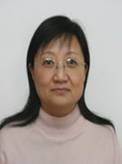-
175浏览
-
0点赞
-
0收藏
-
0分享
-
199下载
-
0评论
-
引用
期刊论文
Modeling and Simulation of Fed-Batch Protein Refolding Process
Biotechnol. Prog., 2004, Vol. 20, No.4,-0001,():
The simplified kinetic model that assumes competition between first-order folding and third-order aggregation was used to model the fed-batch refolding of denatured-reduced lysozyme. It was found that the model was able to describe the process at limited concentration ranges, i.e., 1-2 and 5-7mg mL-1, respectively, at extensive guanidinium chloride (GdmCl) concentrations and controlled concentrations of oxidizing and reducing agents. The folding or aggregation rate constant was different at the two protein concentration ranges and strongly dependent on the denaturant concentration. As a result, both rate constants at the two concentration ranges were expressed as functions of GdmCl concentration. The rate constants determined by fed-batch experiments could be employed for the prediction of the fed-batch process but were not able to be extended to a batch refolding by direct dilution. Computer simulations show that the denaturant concentration and fed-batch flow rate are important factors influencing the refolding yield. Prolonged fed-batch time is beneficial to keep the transient intermediate concentration at a low level and to increase the yield of correctly folded protein. This is of importance when the denaturant concentration in refolding buffer solution is low. Thus, at a low denaturant concentration, fed-batch time should be sufficiently long, whereas at an appropriately high GdmCl concentration, a short fed-batch time or a high feed rate of the denatured protein is effective to give a high refolding yield.
【免责声明】以下全部内容由[董晓燕]上传于[2005年11月04日 17时39分44秒],版权归原创者所有。本文仅代表作者本人观点,与本网站无关。本网站对文中陈述、观点判断保持中立,不对所包含内容的准确性、可靠性或完整性提供任何明示或暗示的保证。请读者仅作参考,并请自行承担全部责任。
本学者其他成果
同领域成果

 提示
提示

